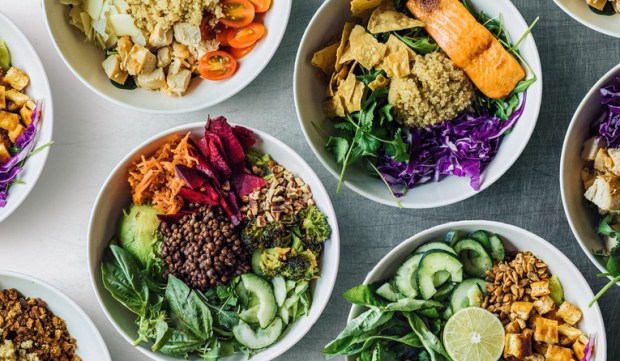Sweetgreen’s Plans To Build A ‘Food Platform’ On eCommerce Principles

Like many innovators, the founders of Sweetgreen were simply trying to solve a problem — and along the way managed to build a business around the solution.
The problem Sweetgreen’s founders had, according to Co-Founder Jonathan Neman, was very basic: they were hungry. And they found that it was difficult to really fill that need on a Georgetown student’s budget. They could eat cheap food that tasted good and served up fast, but was terribly bad for them; or they could eat healthy food that also tasted good — but generally speaking, accessing that food was going to be slow and expensive.
“The idea was creating a restaurant that … or a place to eat that made you feel excited to eat it, good while you’re eating it, good right after, and good many years after,” Newen told Recode.
The idea, however, has expanded pretty notably since then. Sweetgreen now employs about 3,500 people, has 90 stores nationwide and has seen about a million people download its mobile app. About half of the orders Sweetgreens fills per day are made via mobile. And, according to Neman, Sweetgreen is thinking past its earliest days when the problem they were solving was lunch.
“We see this as building the food platform,” he said “A restaurant creates content, so our salads are our hits. If you just have your restaurant itself, you own your platform, you go direct to consumer.”
And that direct-to-consumer relationship is critical to the brand’s growth, he said, which means its founders are hesitant to partner with either tech firms or the aggregators on expansions like delivery because they don’t want to risk that direct consumer relationship. The world, according to Neman, has shifted to a place where the digital disintermediation of the customer is becoming the norm. The “Uber Eats” and various aggregators of the world of the world that create the “platform” for the food creators’ content.
“Our goal is to be a content creator and a food platform. So a full vertically integrated food system, from supply chain, production, content creation and ordering.”
The restaurants Sweetgreen rolls out, he said, come in different shapes and sizes, but have some commonality. The preparation process is highly regimented across the chain, and all of the ingredients are made onsite and/or prepped fresh daily. That basic blocking and tackling is critical, Neman notes, because at the end of the day “content is king” in restaurants as it is everywhere else, and if the food doesn’t taste good and consistently live up to expectations, people aren’t going to eat in the restaurants.
From there, he said, Sweetgreen has been highly focused on layering digital innovations throughout its core offering to create an all-over brand experience. Delivery on demand is a standard Sweetgreen offering, and it accepts orders in a wide variety of ways, including voice ordering, text ordering and Slack ordering.
“We want to take these trends we’ve seen in eCommerce and apply it to food,” Neman said.
Sweetgreen is also taking an expansive approach to technology on the backend — particularly when it comes to its fresh food supply chain. The firm is currently investing in blockchain technology to better shore up tracking of ingredients shipped to its store locations. Starting in January, it will require some of its vegetable producers to use blockchain to record different pieces of information, such as when and where their items were planted.
“We are trying to build a system of full traceability to know which farm food comes from and when it is picked,” Nicolas Jammet, Sweetgreen’s cofounder and chief concept officer, told Business Insider. “For us, that idea of traceability is the biggest protection [against food poisoning].”
The idea of the custom and fully transparent supply chain, Neman noted, is also critical to the Sweetgreen brand, because of how much focus each of its locations puts on localizing dishes. Though there are national products available at Sweetgreen locations, the firm mostly builds its supply chain city by city as it expands, as its contracts for food are not with distributors but with growers directly.
“We establish relationships with them [the farmers] and we actually build our menus based off of the supply,” he said. “And that means our food will be different in different parts of the country, and different parts of the world eventually, and will be different at different times of the year. We celebrate that. We celebrate the fact that food should taste different at different places. We reject this homogenous food system that you created this burger and it should be the same everywhere, exactly.”
